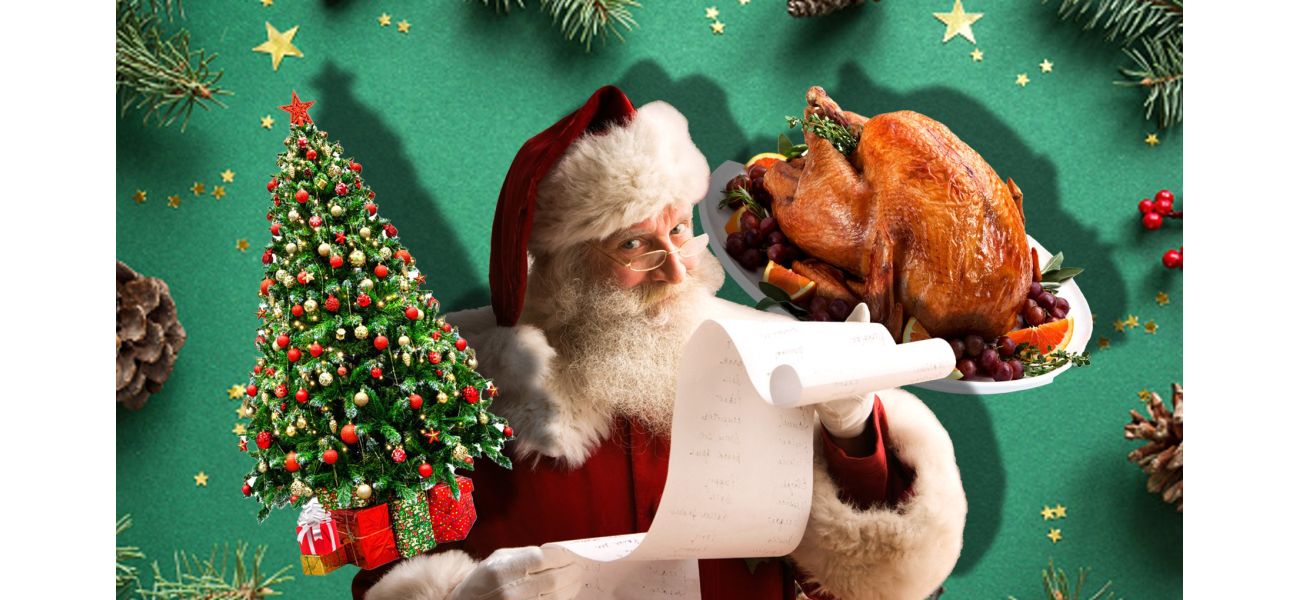Discover the meaning behind seven popular Christmas customs, including feasting on turkey and cracking open festive crackers.
Where do your favorite holiday traditions come from?
December 22nd 2024.

Have you ever stopped and wondered why we celebrate Christmas the way we do? As we approach Christmas 2024, many people in the UK have already finished wrapping their presents and are indulging in some delicious Quality Street chocolates. While every family has their own unique Christmas traditions, there are some customs that have been passed down for centuries and are widely practiced by most people. We rarely question these traditions, but have you ever stopped to think about how they came about? For example, why do we put up a Christmas tree in our living rooms, and what is the story behind Santa Claus?
Let's take a closer look at some of our favorite Christmas traditions and how they originated. We'll start with the Christmas cracker, a staple at many holiday gatherings. Did you know that this festive item was invented over 150 years ago by a baker named Tom Smith? While on a trip to Paris, Mr. Smith discovered a French confection called a "bonbon," which was a sugared almond wrapped in tissue paper. He decided to create his own version and added a small love motto inside the wrapper. His son Walter later added the iconic paper hats and novelty gifts, making the Christmas cracker the beloved tradition it is today.
Now, let's talk about the star of many Christmas dinners – the turkey. Before the Victorian era, beef and goose were the go-to meats for Christmas dinner. Turkey was considered a luxury food and was only eaten by the wealthy. However, after the Second World War, turkeys became more popular due to the widespread use of refrigerators in homes. This allowed families to safely store uneaten meat, making turkey a more practical choice. Fun fact: it is said that King Henry VIII was the first person in Britain to enjoy a turkey for his Christmas meal.
One of the most recognizable symbols of Christmas is the evergreen tree. While it's hard to pinpoint exactly when this tradition started, it has been recorded for thousands of years across Europe. Pagans used to decorate their homes with tree branches during the winter solstice as a symbol of life. Romans also decorated their temples with fir trees during the festival of Saturnalia. It is believed that the tradition of bringing evergreen trees into the home during winter originated in Germany, and Queen Victoria and Prince Albert are credited with popularizing it in England during the 1800s. However, it was actually King George III's German wife, Queen Charlotte, who introduced the tradition to the UK in the 1760s.
Now, let's delve into the origins of Santa Claus. This jolly man in a red suit has been a beloved figure for many centuries, and his origins can be traced back to a monk named Saint Nicholas. He was known for his kindness and generosity, and it is said that he would give gifts to children and the poor. Over time, many legends were created about Saint Nicholas, and his story spread across Europe and eventually to the US.
When it comes to gift-giving, we can thank the Wise Men for starting this tradition. The custom of giving presents at Christmas was created to honor the gifts given to baby Jesus by the Wise Men – frankincense, gold, and myrrh. In the past, gift-giving would often take place around New Year's or on December 6, which is Saint Nicholas's birthday. However, the popularity of this tradition grew after the publication of the famous poem "Twas The Night Before Christmas" in 1823 and Charles Dickens's novel "A Christmas Carol" in 1843. By the end of the 19th century, Christmas Eve had become the most common date for gift-giving in Western culture.
Lastly, let's talk about the relatively new tradition of Elf on the Shelf. This popular tradition stems from the 2005 novel of the same name by Carol Aebersold and her daughter Chanda Bell. The book tells the story of how Santa's "scout elves" hide in people's homes to watch over events and report back to Santa. This fun and festive tradition has become a beloved part of many families' holiday celebrations.
As we can see, our favorite Christmas traditions have rich and interesting origins. Whether it's hanging stockings, decorating the Christmas tree, or indulging in a delicious turkey dinner, these customs have been passed down through generations and continue to bring joy and warmth to our holiday season. So as we come together to celebrate Christmas, let's remember the history and stories behind these beloved traditions. What are your favorite Christmas traditions? Share your thoughts in the comments below.
Let's take a closer look at some of our favorite Christmas traditions and how they originated. We'll start with the Christmas cracker, a staple at many holiday gatherings. Did you know that this festive item was invented over 150 years ago by a baker named Tom Smith? While on a trip to Paris, Mr. Smith discovered a French confection called a "bonbon," which was a sugared almond wrapped in tissue paper. He decided to create his own version and added a small love motto inside the wrapper. His son Walter later added the iconic paper hats and novelty gifts, making the Christmas cracker the beloved tradition it is today.
Now, let's talk about the star of many Christmas dinners – the turkey. Before the Victorian era, beef and goose were the go-to meats for Christmas dinner. Turkey was considered a luxury food and was only eaten by the wealthy. However, after the Second World War, turkeys became more popular due to the widespread use of refrigerators in homes. This allowed families to safely store uneaten meat, making turkey a more practical choice. Fun fact: it is said that King Henry VIII was the first person in Britain to enjoy a turkey for his Christmas meal.
One of the most recognizable symbols of Christmas is the evergreen tree. While it's hard to pinpoint exactly when this tradition started, it has been recorded for thousands of years across Europe. Pagans used to decorate their homes with tree branches during the winter solstice as a symbol of life. Romans also decorated their temples with fir trees during the festival of Saturnalia. It is believed that the tradition of bringing evergreen trees into the home during winter originated in Germany, and Queen Victoria and Prince Albert are credited with popularizing it in England during the 1800s. However, it was actually King George III's German wife, Queen Charlotte, who introduced the tradition to the UK in the 1760s.
Now, let's delve into the origins of Santa Claus. This jolly man in a red suit has been a beloved figure for many centuries, and his origins can be traced back to a monk named Saint Nicholas. He was known for his kindness and generosity, and it is said that he would give gifts to children and the poor. Over time, many legends were created about Saint Nicholas, and his story spread across Europe and eventually to the US.
When it comes to gift-giving, we can thank the Wise Men for starting this tradition. The custom of giving presents at Christmas was created to honor the gifts given to baby Jesus by the Wise Men – frankincense, gold, and myrrh. In the past, gift-giving would often take place around New Year's or on December 6, which is Saint Nicholas's birthday. However, the popularity of this tradition grew after the publication of the famous poem "Twas The Night Before Christmas" in 1823 and Charles Dickens's novel "A Christmas Carol" in 1843. By the end of the 19th century, Christmas Eve had become the most common date for gift-giving in Western culture.
Lastly, let's talk about the relatively new tradition of Elf on the Shelf. This popular tradition stems from the 2005 novel of the same name by Carol Aebersold and her daughter Chanda Bell. The book tells the story of how Santa's "scout elves" hide in people's homes to watch over events and report back to Santa. This fun and festive tradition has become a beloved part of many families' holiday celebrations.
As we can see, our favorite Christmas traditions have rich and interesting origins. Whether it's hanging stockings, decorating the Christmas tree, or indulging in a delicious turkey dinner, these customs have been passed down through generations and continue to bring joy and warmth to our holiday season. So as we come together to celebrate Christmas, let's remember the history and stories behind these beloved traditions. What are your favorite Christmas traditions? Share your thoughts in the comments below.
[This article has been trending online recently and has been generated with AI. Your feed is customized.]
[Generative AI is experimental.]
0
0
Submit Comment





